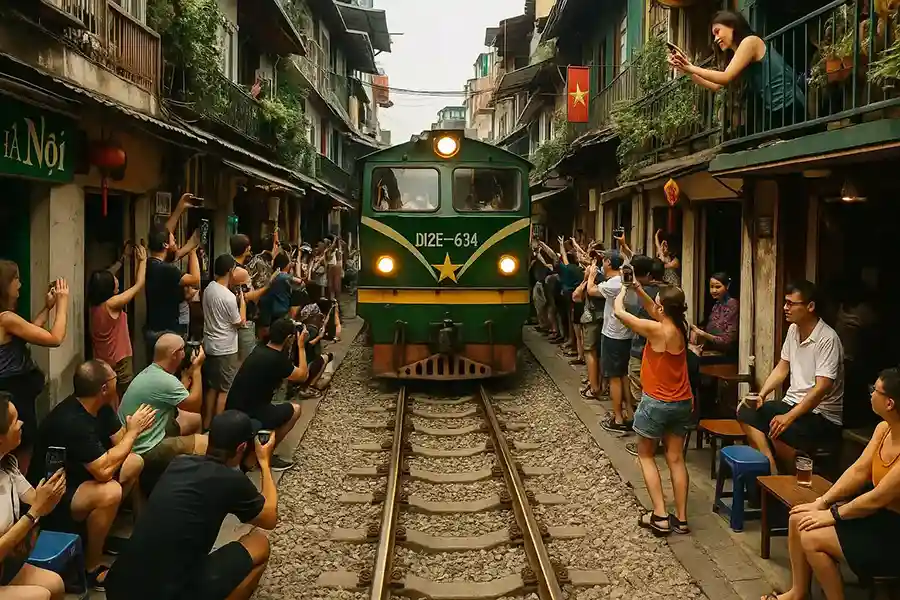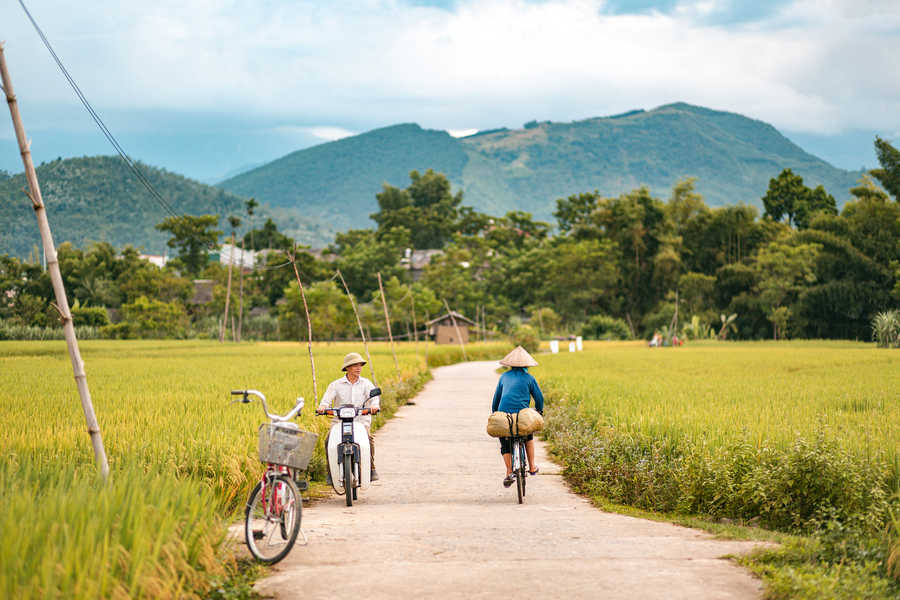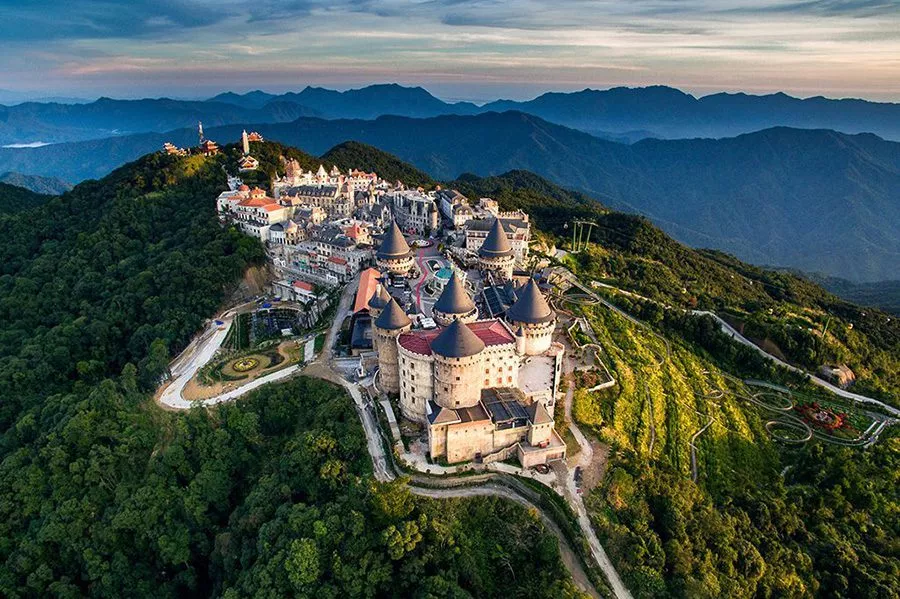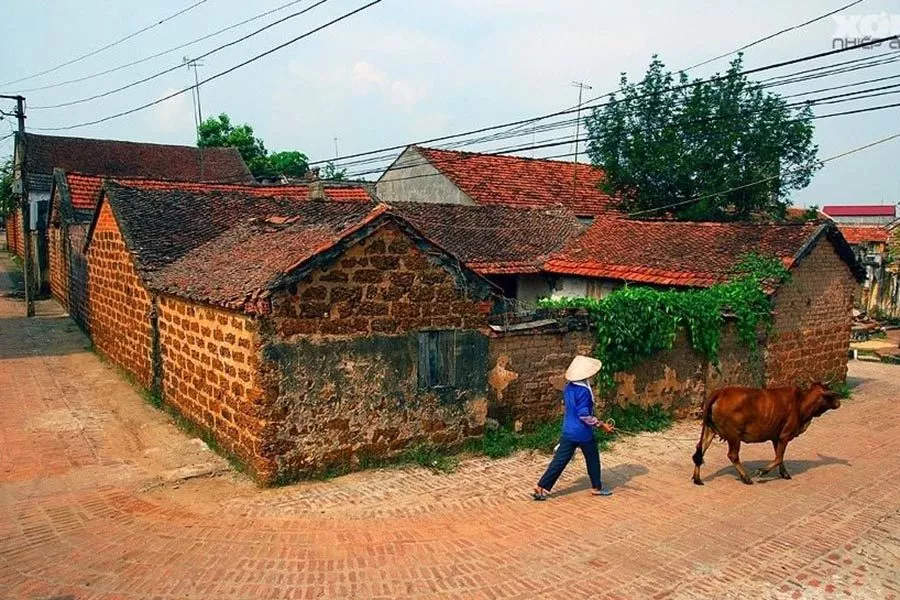If you’re looking for a unique and unusual experience in Hanoi, the famous Train Street is sure to charm you. This railway track, running just inches from houses and cafés, is one of the most surprising sights in the Vietnamese capital. Located between the districts of Hoàn Kiếm and Đống Đa, it winds through narrow alleys where trains pass just centimeters from building facades and terrace tables. In just a few years, it has become an iconic spot—unmissable during any stay in Hanoi.
Yes, the street now draws plenty of visitors, but that’s also what creates its unique atmosphere—a buzzing mix of locals, travelers, and café owners set up along the tracks. Sitting down for a drink in the late afternoon, just before the train arrives, has become a ritual for many. And when the train rushes through the crowd at full speed—goosebumps are guaranteed!
Here’s a little secret: there’s not just one, but two Train Streets in Hanoi! The most famous one is near the central station, but another, lesser-known section offers an experience just as memorable—perhaps even more authentic.
Ready to explore this one-of-a-kind place? Let us guide you…
Hanoi’s Train Street: Timetable & Practical Information
The Railway in Hanoi: Between History, Daily Life, and the Unexpected
Hanoi is crossed by a historic railway line built in the early 20th century during the French colonial period. At the time, this railway was part of a vast network connecting northern Vietnam to China, Laos, and the southern part of the country. It played a strategic role for many decades, both in transporting goods and linking major cities.
To this day, the line is still operational, connecting the capital to destinations like Hai Phong, Lang Son, and even Ho Chi Minh City—on a journey that spans nearly 1,700 km (see our article on train travel in Vietnam). This railway literally winds through Hanoi, cutting the city from north to south, passing through markets, residential areas, and commercial streets—often without barriers or visible warning signals.
Among its many urban segments, one in particular has captured the world’s attention in recent years: what is now famously known as “Train Street.” Located between Hanoi and Long Bien stations, this iconic stretch of track runs through a historic neighborhood where the rails pass just inches from people’s homes.
In this narrow alleyway, locals have adapted to the rhythm of the train schedule. Daily life unfolds right on the tracks—people cook, play, and sip coffee there. But when a train is about to pass, a well-practiced ritual takes place: tables are folded, tourists are urged to press against the walls, and children are called back indoors. A few seconds of thunderous noise… and life resumes as if nothing happened.
Today, Train Street has become a major tourist attraction—not just for its striking visuals and photogenic setting, but also for the surreal calm that returns the moment the train disappears. It’s the perfect symbol of Hanoi’s ingenuity and resilience, where tradition, adaptation, and modernity meet between the rails.
One or Two Train Streets? The Two Sections You Should Know About
There are actually two “Train Streets” in Hanoi, both crossed by the same railway line but located in different areas of the city center.
The most famous stretch runs between Trần Phú and Phùng Hưng streets, right near the central railway station. Highly popular with tourists, this area is often monitored by police—especially around train times—and access may sometimes be restricted (authorities occasionally close it off if the crowds are deemed a safety risk).
But there’s a second section, a bit further south, along Lê Duẩn Street, particularly around cafés like Hanoi 1990s or Coffee 17 Train Street – Mai Linh. While equally impressive, this part is generally less crowded and offers a more relaxed vibe, with fewer police around. You’ll find the same picturesque scenes here: cafés lining the tracks, tourists sitting on small stools, cameras at the ready, all waiting for the train to come rushing through this unique setting.
While the first section has become iconic, the second offers a calmer experience—just as photogenic, and often more authentic.
What You’ll Witness On Site: Between Local Life and a Rush of Adrenaline
Before the train arrives, Train Street offers a scene of everyday life that feels both ordinary and peaceful. Locals prepare their meals right on the tracks, sitting on small plastic stools. Children play hopscotch between the rails. Curious or already enchanted travelers settle onto the narrow café terraces just a few steps from the tracks, cameras in hand. The atmosphere is relaxed—almost carefree.
Then suddenly, the signal sounds. A whistle, a shout, or just a knowing glance exchanged between regulars. In a matter of seconds, the street transforms: tables are folded away, chairs stacked, tourists ushered to press themselves against the walls. Vendors ensure everything is safe. The stage is set.
The train then emerges at the end of the alley—imposing, loud, almost surreal. It moves slowly but steadily, brushing past facades, balconies, and the stunned gazes of onlookers. The space is so narrow that a single misstep could make you shiver. The passage lasts just a few intense seconds—a blend of awe and discomfort, of excitement and tension.
And then, everything goes quiet again. Laughter returns. Chairs are brought back out. Coffee reappears on tables. Daily life resumes as if nothing happened—except in the visitors’ eyes, where the sparkle of a suspended moment lingers, unforgettable.
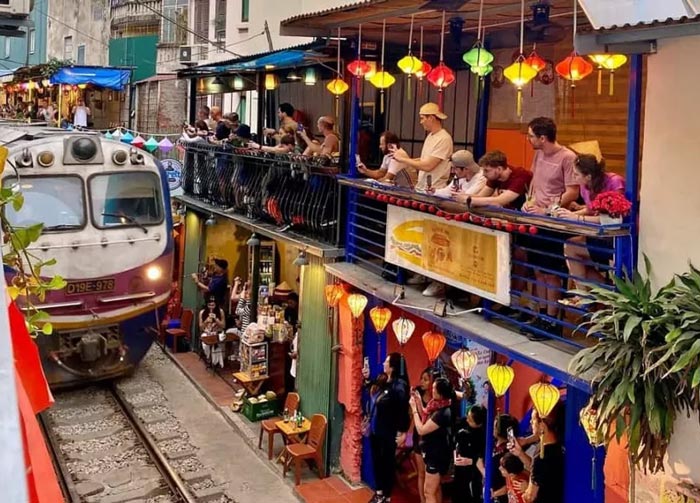
View of Train Street from a Café Balcony
Practical Info: Schedule, Access, Safety
Here’s a small table showing the train schedule—you’ll also find it posted in most cafés along the street! You can take your pick: in the morning, there are fewer people, but the atmosphere is more subdued. In the evening, with cafés lit up with fairy lights and a lively vibe, the experience can be quite magical.
Or why not go twice?
| Day | Time Slots |
|---|---|
| Monday to Friday | 9:00 – 9:20 – 11:45 – 15:15 – 19:40 – 21:15 |
| Saturday & Sunday | 6:10 – 9:00 – 9:20 – 11:45 – 15:15 – 19:40 – 21:15 |
For obvious safety reasons, always stay clear of the tracks and follow the instructions of local residents. This is, above all, a residential area—not a typical tourist attraction. In fact, due to the overwhelming number of visitors, authorities have occasionally restricted access to certain sections for safety reasons. Before going, check with your hotel or a local travel agency. Safety comes first.
In the end, why visit Train Street?
- To enjoy a unique experience in Vietnam
- To capture spectacular photos in a breathtaking setting
- To witness local daily life from a different perspective
- To sip on a local coffee while waiting for the train to pass
Even if you usually avoid the crowds, you’ll likely be charmed by the street’s cosmopolitan vibe, where travelers from all over the world come together!




















